Wednesday, March 15, 1967
Recording "Within You Without You"
For The Beatles
Last updated on January 14, 2024
Wednesday, March 15, 1967
For The Beatles
Last updated on January 14, 2024
Recording "Sgt. Pepper's Lonely Hearts Club Band"
Nov 24, 1966 - Apr 20, 1967 • Songs recorded during this session appear on Sgt. Pepper's Lonely Hearts Club Band (UK Mono)
Recording studio: EMI Studios, Studio Two, Abbey Road
Session Mar 13, 1967 • Recording "Good Morning Good Morning"
Article Mar 15, 1967 • Peter Blake and Jann Haworth have dinner at Paul’s
Session Mar 15, 1967 • Recording "Within You Without You"
Session Mar 17, 1967 • Recording "She's Leaving Home"
Session Mar 20, 1967 • Recording and mixing "She's Leaving Home"
Some of the songs worked on during this session were first released on the "Sgt. Pepper's Lonely Hearts Club Band (UK Mono)" LP.
George Harrison had already brought one of his compositions to the “Sgt. Pepper’s Lonely Hearts Club Band” sessions, called “Only A Northern Song“, which was recorded on February 13 and 14, 1967. However, it was considered not good enough compared to the other materials recorded so far.
On this day, George Harrison began recording another of his compositions, the Indian-influenced “Within You Without You“. This song did not feature any other Beatles, but they attended the session anyway. The artist Peter Blake was also present to discuss ideas for the album cover for the Sgt. Pepper album that he would design.
The backing track of “Within You Without You” features George and The Beatles’ assistant Neil Aspinall on tambouras (long-necked, plucked, four-stringed instruments), and musicians from the Asian Music Circle, a collective based in Finchley, North London, on dilruba (a bowed musical instrument), tabla (a pair of hand drums), swarmandal (an Indian harp), and additional tamboura. The names of those musicians remained unknown until Dr Mike Jones from the University of Liverpool conducted research to reveal their identities in 2017.
Two of the surviving Indian musicians from the original Sgt. Pepper recording […] were tracked down by Dr Mike Jones. [Musicians on Within You Without You] are the late Anna Joshi and Amrit Gajjar (dilruba); and Sikh temple musician Buddhadev Kansara (tamboura) and Natwar Soni (tabla) […]
On researching the influence of Indian music on George Harrison and The Beatles, Dr Mike Jones from University of Liverpool’s Department of Music said: “My colleague and collaborator John Ball and I were approached by Utkarsha Joshi, son of the late Anna Joshi, who played dilruba for George Harrison on the Within You, Without You recording session for Sgt. Pepper at Abbey Road Studios in 1967. We discussed that the four Indian musicians who played on George Harrison’s track, including his father, have been regarded as ‘unknown musicians’ for 50 years.” […]
From University of Liverpool, June 6, 2017
There were very few people to tell and some of the Indian musicians who worked on the record didn’t even hear the track. It’s not part of their mainstream lives. On the album sleeve, they were never credited. That wasn’t deliberate or a snub.
I was in correspondence with Apple Corps. They said: ‘We’ve looked at the Abbey Road tape boxes and they say that there were four Indian musicians who played, but one Indian musician’s name has been left off’. ‘Do you know who that musician is?’ We found out who that fourth musician is. No-one has ever put his name to Within You Without You until now. We’ve began a detective story, not just to identify the musician but collect his stories.
Dr Mike Jones from University of Liverpool’s Department of Music – From The Herald (heraldscotland.com), June 2017
Although the song was recorded as one piece, it was referred to as having three parts during the recording. Following rehearsals, the basic track for “Within You Without You” was recorded in one take that lasted 6 minutes and 25 seconds. Track one of the four-track tape had tamboura and tabla on it. Track two had dilruba and swardmandal. Track four had tamboura. This Take 1 was released in the 2017 “Sgt. Pepper’s Lonely Hearts Club Band” box set.
Work on “Within You Without You” continued on March 22, 1967.
After the debacle of “Only A Northern Song,” nobody was really expecting too much of George Harrison, and, quite frankly, when he came in at around this time and previewed “Within You Without You” for us, nobody was overwhelmed. Personally, I thought it was just tedious. Of course, just hearing him run it down on acoustic guitar gave very little idea of the beautiful song that it was to turn into once all the overdubs were completed, but at the time it caused a lot of eye-rolling among the other Beatles and George Martin. […]
The concept the two Georges [Harrison and Martin] had come up with was to record a rhythm track that consisted entirely of Indian instruments, and I was excited by the challenge it presented. Studio Two had a hardwood floor, so in order to dampen the sound, I normally put down carpeting underneath Ringo’s drums and in the area where Beatles vocals were recorded. But this time Richard and I got out a bunch of throw rugs and spread them all around the floor for the musicians to sit on, all in an effort to make them more comfortable and make the studio a bit more homey. Mind you, the Abbey Road rugs were completely moth-eaten and dilapidated… but it was the thought that counted.
All four Beatles were there when the basic track was recorded, along with famed illustrator Peter Blake, who was there to talk about the Sgt. Pepper album cover. He mostly huddled with Paul and John while George was busy instructing the musicians as to the parts he wanted them to play. Ringo, as usual, was lost in a game of chess off in a corner with Neil. It was very calm and peaceful in the studio that evening. Harrison was surrounded by his new friends, the Indian musicians, and he was gracious and welcoming when Peter Blake arrived; for perhaps the first time during the Pepper sessions, I could see that George was completely relaxed. Paul was somewhat interested in the goings-on and in how the various instruments were played— eventually he even bought a sitar himself—but John seemed quite bored, wandering around the studio aimlessly, not knowing what to contribute. Because the song was unusually long, there were quite a few glances between John and Paul when the rhythm track was being recorded, and I could tell that they were a bit dubious. Yes, it’s all very nice, 1could imagine they were thinking, and it’s all very well played, but it isn’t Beatles, is it? They never really got into it, or any of George’s Indian music, for that matter, but I guess they went along with it for the sake of band unity.
Eventually the recording commenced. It was decided to first lay down a drone, with three or four musicians playing one note continuously; even Neil Aspinall was recruited to assist Harrison in playing tamboura. As the other instruments began to be layered on top of the drone, the structure of the song started to make a little more sense. I quite liked the sound of the tabla, and, as I had done on George’s Revolver track “Love You To,” I once again decided to close-mic them and add signal processing to make things a bit more exciting sonically.
Geoff Emerick – From “Here, There and Everywhere: My Life Recording the Music of The Beatles“, 2006
Again, George’s contribution, ‘Within You Without You’, was, with all deference to George, a rather dreary song, heavily influenced by his obsession with Indian music at that time. I worked very closely with him on the scoring of it, using a string orchestra, and he brought in some friends from the Indian Music Association to play special instruments. I was introduced to the dilruba, an Indian violin, in playing which a lot of sliding techniques are used. This meant that in scoring for that track I had to make the string players play very much like Indian musicians, bending the notes, and with slurs between one note and the next.
George Martin – From “All You Need Is Ears“, 1979
When he came up with ‘Within You Without You’, then, as a replacement [for “It’s Only A Northern Song”], it was a bit of a relief all round. He’d composed it after an intense late-night conversation with his mate Klaus Voormann about the meaning of life. This song was really different; and although George had experimented with Indian music quite a bit before Sgt. Pepper — the sitar in ‘Norwegian Wood’ springs to mind — this was the first time he’d devoted an entire track to his obsession.
‘Within You Without You’ demanded Indian musicians. It was nothing whatsoever like anything John or Paul could have come up with, and in that lay much of its appeal for me. I still didn’t think of it as a great song, though (many now do!). The tune struck me as being a little bit of a dirge; but I found what George wanted to do with the song fascinating. It was cosmically different — weird! The lyrics touched on what you might call the metaphysical: the inner meaning of life, and all that kind of thing. And it was deeply anti-establishment.
George Martin – From “With A Little Help From My Friends: The Making of Sgt. Pepper“, 1995
When he first played it to me on his acoustic guitar, George made rather a mournful sound: but I was intrigued. He had a host of Indian musicians who were friends of his, some of whom he called in to play a guide rhythm track with him. George loved working with these musicians, and it was fascinating to see how his ideas grew, and how easily he communicated the complex music to them. Indian rhythms can be extraordinarily difficult, and I have a fond memory of George speaking in a strange tongue, emphasizing the accents with a wag of his head — ‘Ta-ta ticky ta, ticky tick ta ta’ and so on. The Indian musicians cottoned on instantly. It was most impressive. I, too, knew a few of the musicians from the Asian Music Circle in London, because of my previous work with Peter Sellers.
George Martin – From “With A Little Help From My Friends: The Making of Sgt. Pepper“, 1995
We started working on this strange song (which was, incidentally, one of Geoff Emerick’s favourites; he loved George’s music) on 15 March. It was a long one, at just over five minutes, and it wassplit into three main parts. Right from the first note, it brims over with Indian instruments: the dilruba, the tamboura drone, the tabla, and the swordmandel — the zither-like plucked instrument we had already used on ‘Strawberry Fields Forever’.
When the Indian instrumentalists arrived hot-foot from exotic Finchley they changed the studio scene — bare walls, bare floor, hostile fridge — pretty dramatically. They scattered carpets on the floor, spread hangings, hunkered down, and generally made themselves at home: suddenly we had colour, life and warmth in our normally cold and featureless surroundings.
George, as usual, set joss-sticks smouldering in the corners. He looked a bit like the Lone Ranger, with his Indian friends. Although the other Beatles were there, they stuck around for the fun of it. None of them played or sang a note. In order to get them to play what he wanted, George would simply sing to the Indian musicians, or occasionally pick a few notes on the sitar.
On that very first evening I met Peter Blake. He had come in to the studios to talk to the boys about their ideas for the album cover, which Paul was trying to organize. Peter had never seen a Beatles recording session, and he was amazed. He thought it was a very gentle, very easy way of working. But it was all the music, really: itwas George’s hypnotic music that induced that strange air of peace.
George Martin – From “With A Little Help From My Friends: The Making of Sgt. Pepper“, 1995
My experience with The Beatles was excellent. They were nothing but nice people. Only George Harrison spoke to me as he was the one who was passionate about Indian music. He asked me if I could play the tamboura, and then we took about five to six minutes to come up with the tune.
I was very very surprised when I got the call as I always wanted to meet The Beatles as they were very popular.
I only heard the music briefly and I didn’t really think much of it as it wasn’t completed when I was working on it. It was only three to four years later when I finally heard the song in my shop and recognised it, that I thought, this is excellent.
It didn’t matter to me if people knew I was on that song, for me it was about the experience of working with The Beatles. They paid us each £20 per session and I was at the Abbey Road studio for two evenings so I received £40, which I was very happy about. All these years later that I have received recognition I am most happy that people still care for Indian music.
Buddhadev Kansara – From The Herald (heraldscotland.com), June 2017
And you don’t remember the other Beatles being there for that session?
No, they were never there … there was one, and if you listen very carefully at the end of one of the sessions, there’s a little bit of tambourine. Now, somebody walked into the studio while we were doing whatever it was, picked up a tambourine and started playing along. And that’s the only bit – an exclusive here – that’s the only piece of somebody else other than George or his Indian friends.
Who was that?
Don’t know.
Not much of an exclusive is it then!
It’s an exclusive. It was either John or Paul or Ringo. They walked in downstairs, we couldn’t see who did it. But we thought ‘Oh there’s a tambourine playing along, who’s doing that?’
Richard Lush – Interview with ABC News, May 25, 2017:
These photos are from the Sgt. Pepper Session for “Within you, Without you,” which was recorded beginning on March 15, 1967 at EMI.
A man named V.J. Young worked at a film company with Amrat Gajjar, who was a man from India who had studied under Ravi Shanker. One day he asked Young if he knew his way around London. He told him that he needed to find the EMI recording Studio in St. John’s Wood. Mr. Young agreed to take him there. On the way he was pretty shocked to learn that he was driving his co-worker to a Beatles recording session! He went into the studio and met George Harrison and many other Indian musicians that had worked with the Beatles during the film Help!. He met all four of the Beatles plus Mal, Pattie Boyd, and George Martin.
Paul told the driver that he needed to keep quiet about the session, but he was still allowed to get autographs (except for Ringo) and snap a few photos in the studio. In total, Gajjar was there 5 days as part of the recording session.
From Meet the Beatles for Real: Within you without you session
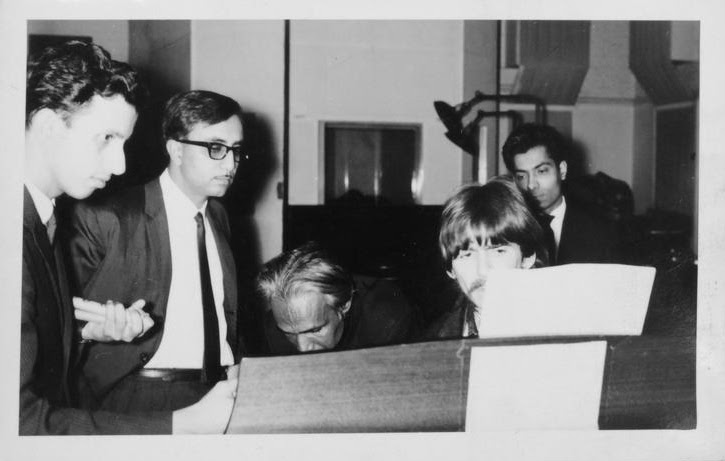
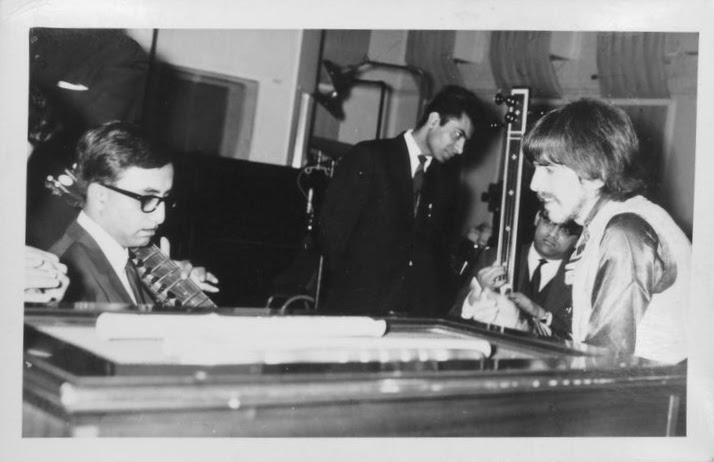
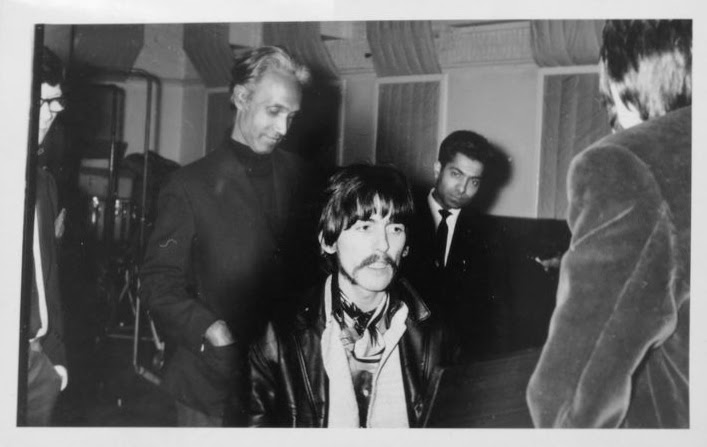
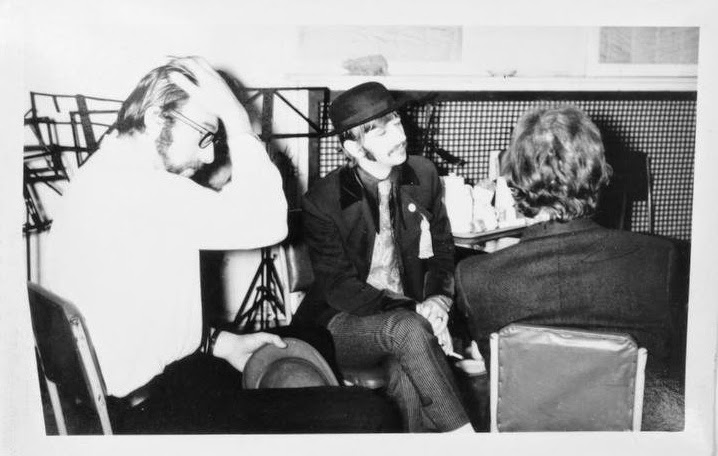
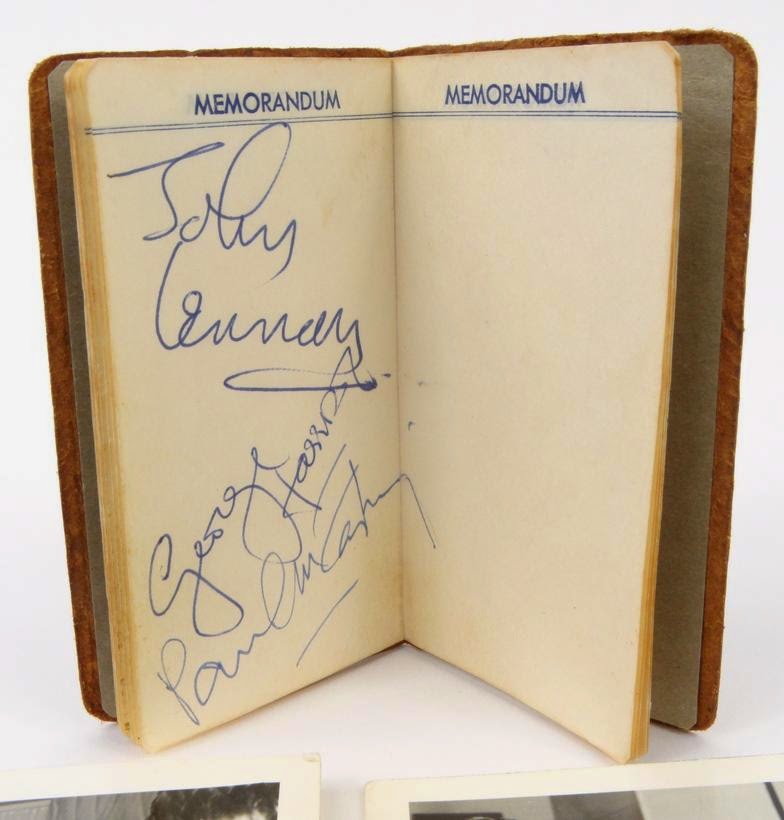
Written by George Harrison
Recording • Take 1
AlbumOfficially released on Sgt. Pepper's Lonely Hearts Club Band (50th anniversary boxset)
The Complete Beatles Recording Sessions • Mark Lewisohn
The definitive guide for every Beatles recording sessions from 1962 to 1970.
We owe a lot to Mark Lewisohn for the creation of those session pages, but you really have to buy this book to get all the details - the number of takes for each song, who contributed what, a description of the context and how each session went, various photographies... And an introductory interview with Paul McCartney!
The Beatles Recording Reference Manual: Volume 3: Sgt. Pepper's Lonely Hearts Club Band through Magical Mystery Tour (late 1966-1967)
The third book of this critically - acclaimed series, nominated for the 2019 Association for Recorded Sound Collections (ARSC) award for Excellence In Historical Recorded Sound, "The Beatles Recording Reference Manual: Volume 3: Sgt. Pepper's Lonely Hearts Club Band through Magical Mystery Tour (late 1966-1967)" captures the band's most innovative era in its entirety. From the first take to the final remix, discover the making of the greatest recordings of all time. Through extensive, fully-documented research, these books fill an important gap left by all other Beatles books published to date and provide a unique view into the recordings of the world's most successful pop music act.
If we modestly consider the Paul McCartney Project to be the premier online resource for all things Paul McCartney, it is undeniable that The Beatles Bible stands as the definitive online site dedicated to the Beatles. While there is some overlap in content between the two sites, they differ significantly in their approach.

Notice any inaccuracies on this page? Have additional insights or ideas for new content? Or just want to share your thoughts? We value your feedback! Please use the form below to get in touch with us.